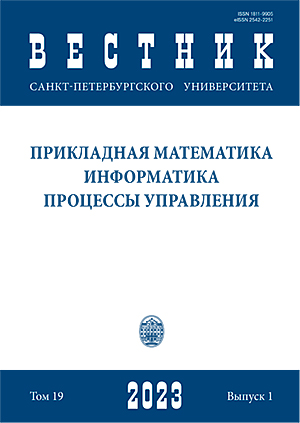Finding the presence of borrowings in scientific works based on Markov chains
DOI:
https://doi.org/10.21638/11701/spbu10.2023.104Abstract
The study aims to develop optimal approaches to the search for borrowings in scientific works. The article discusses the stages of searching for the presence of borrowings, such as preprocessing, rough filtering of texts, searching for similar texts, and searching for borrowings. The main focus is on the description of approaches and techniques that can be effectively implemented at each stage. For example, for the preprocessing stage, it may be converting text characters from uppercase to lowercase, removing punctuation marks, and removing stop words. For the stage of rough text filtering, it is filters by topic and word frequency. It may be calculating the importance of words in the context of the text and representing the word as a vector in multidimensional space to determine the proximity measure for the stage of finding similar texts. Finally, it is a search for an exact match, paraphrases and a measure of similarity of expressions for the stage of finding borrowings. The scientific novelty lies in using Markov chains to find the similarity of texts for the second and third stages of the search for borrowings proposed by authors. As a result, the example shows the technique of using Markov chains for text representation, searching for the most frequently occurring words, building a graph of a Markov chain of words, and the prospects for using Markov chains of texts for rough filtering and searching for similar texts.
Keywords:
search for borrowings, algorithms for finding borrowings, Markov chains, originality checker software
Downloads
References
Downloads
Published
How to Cite
Issue
Section
License
Articles of "Vestnik of Saint Petersburg University. Applied Mathematics. Computer Science. Control Processes" are open access distributed under the terms of the License Agreement with Saint Petersburg State University, which permits to the authors unrestricted distribution and self-archiving free of charge.





